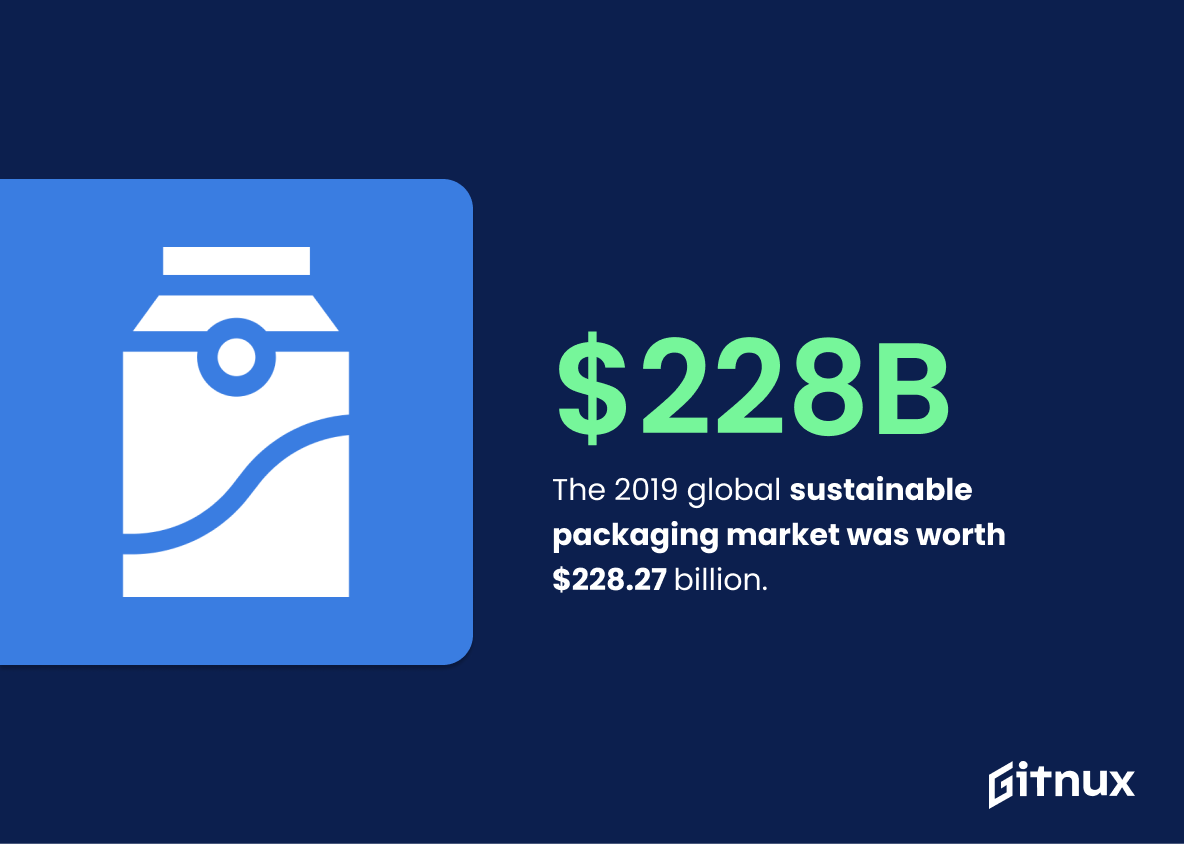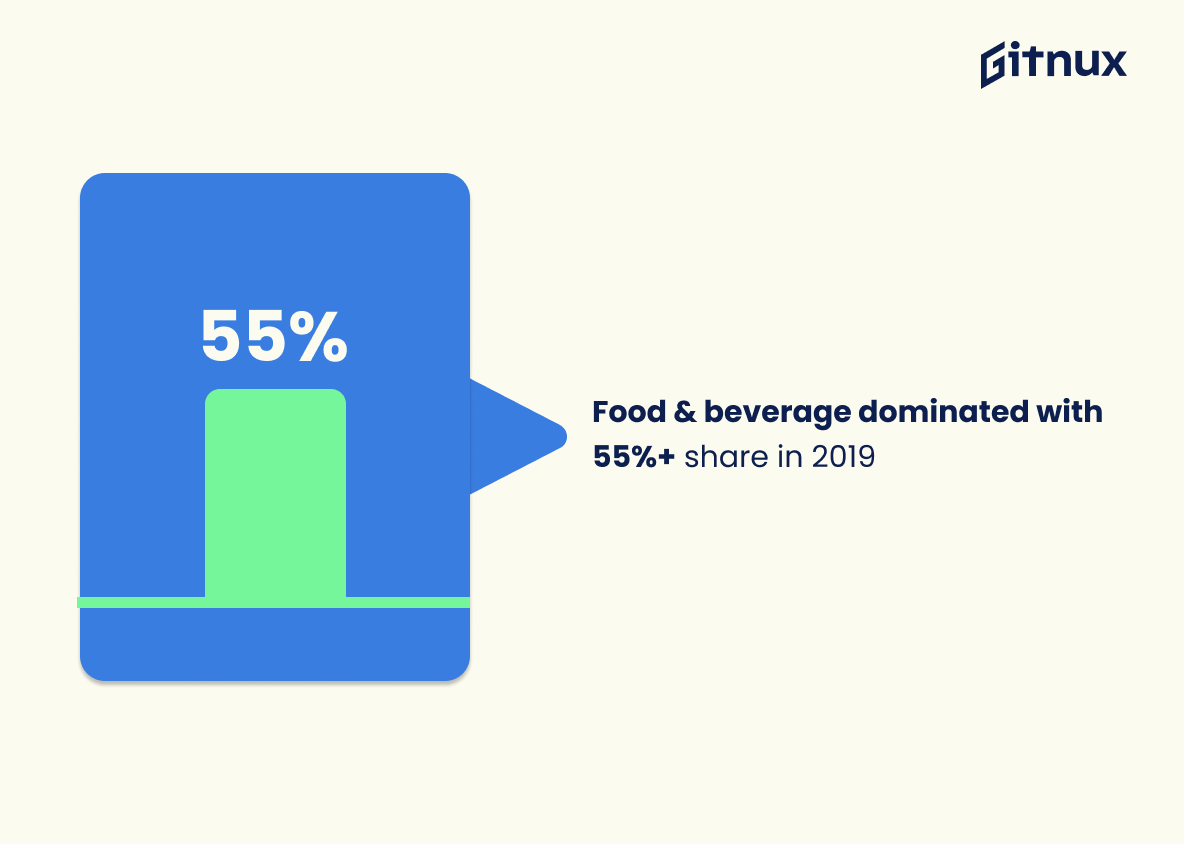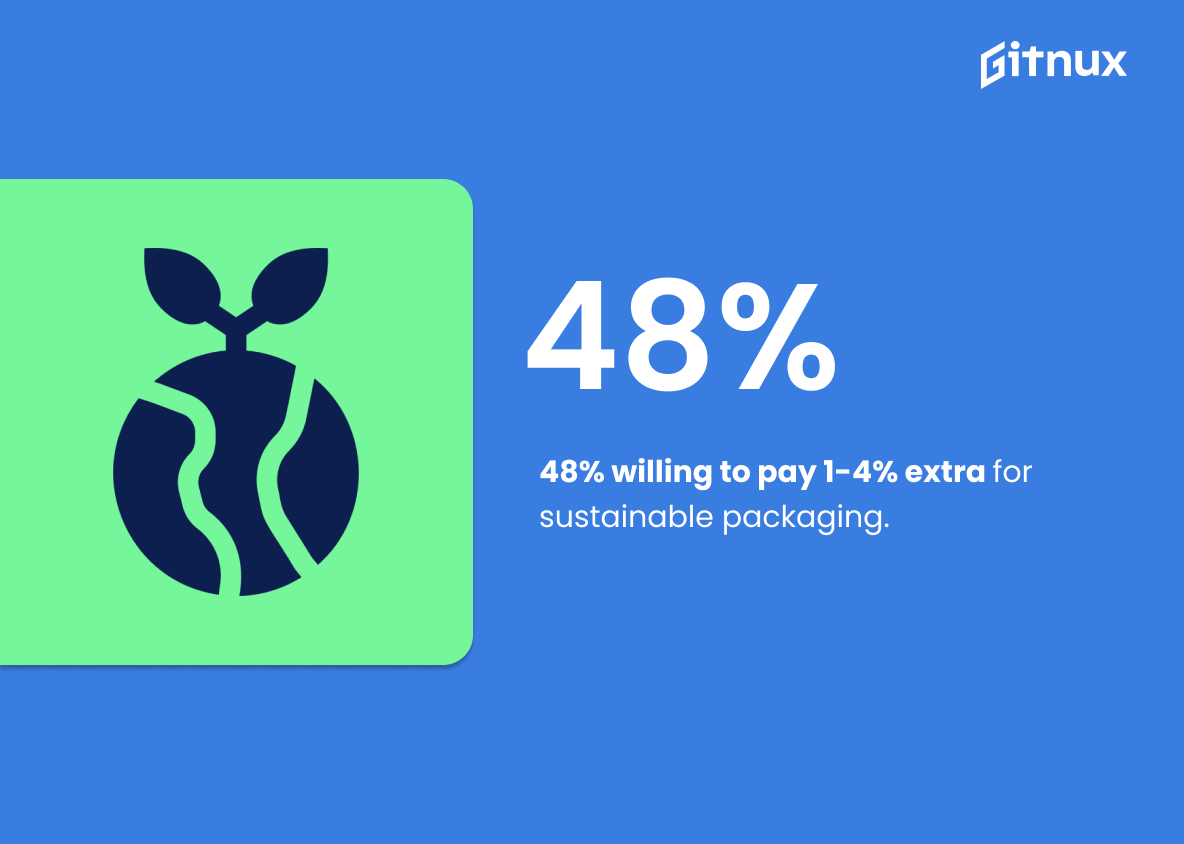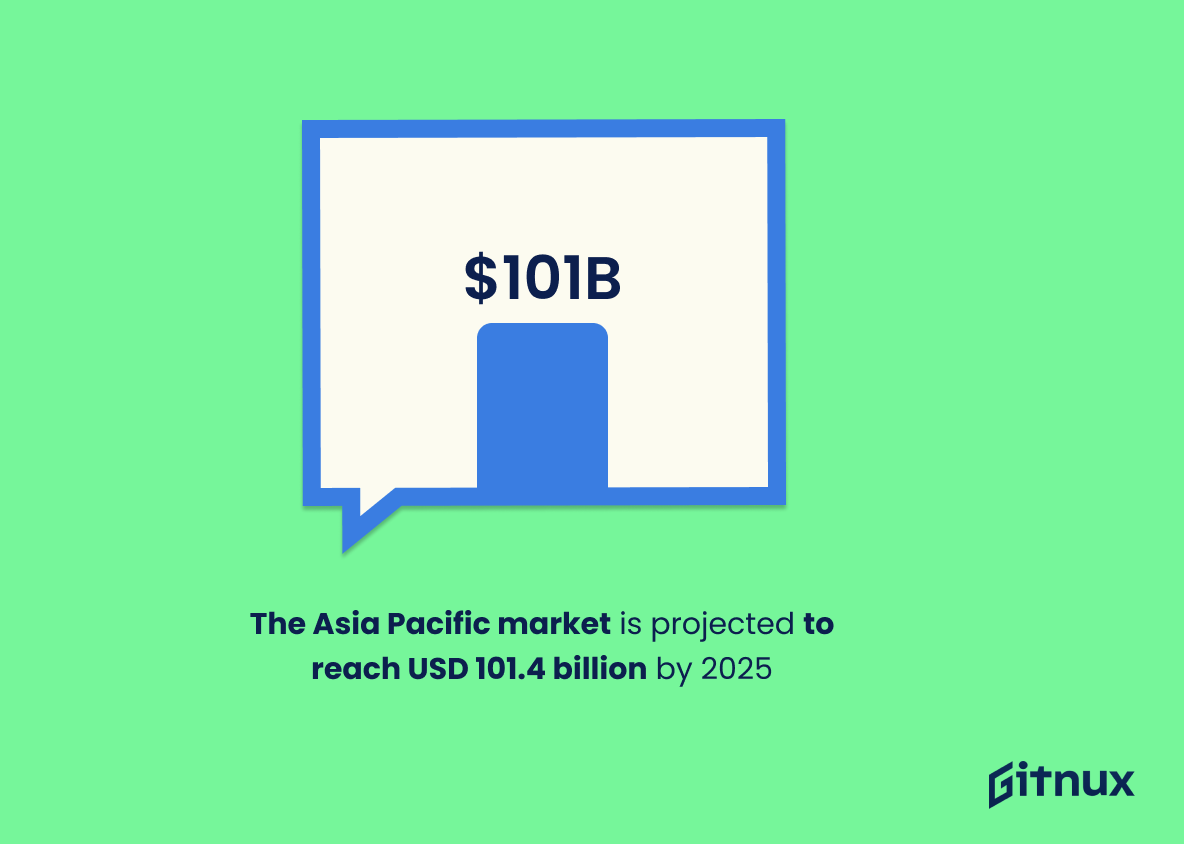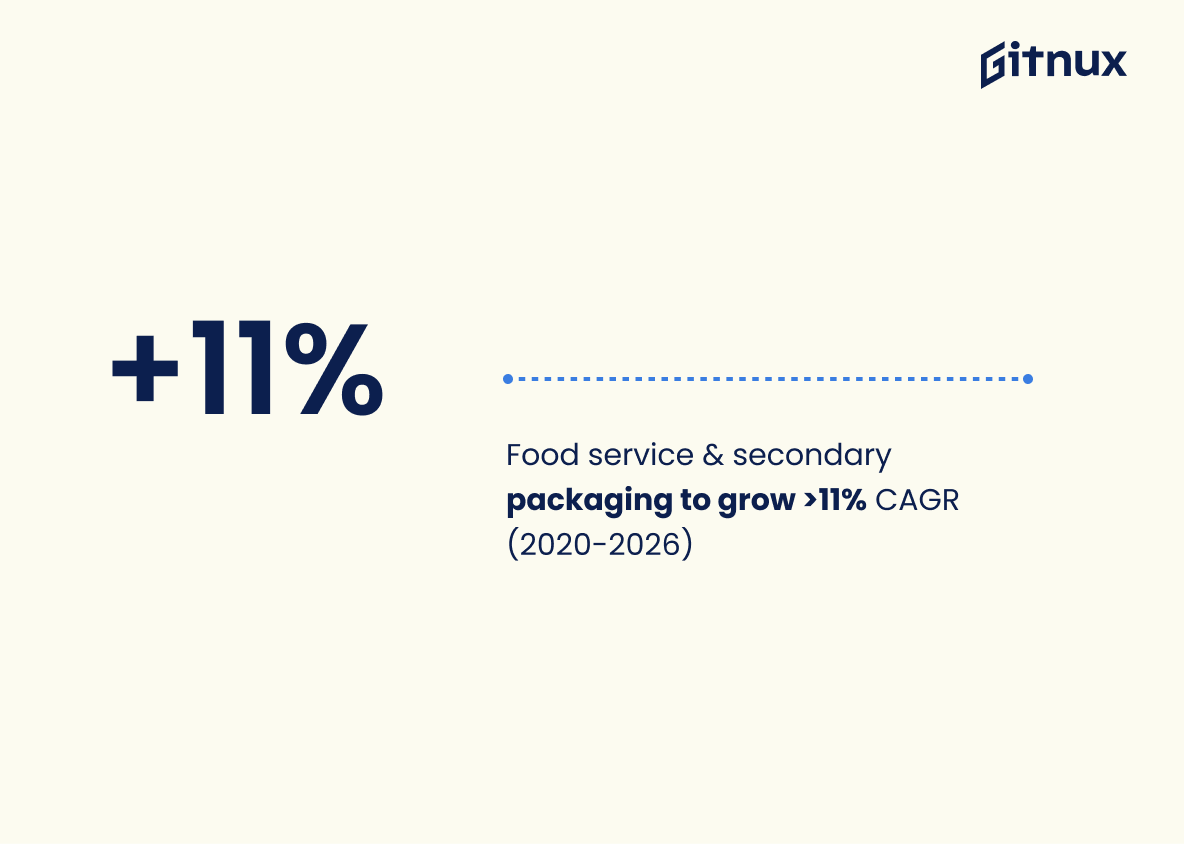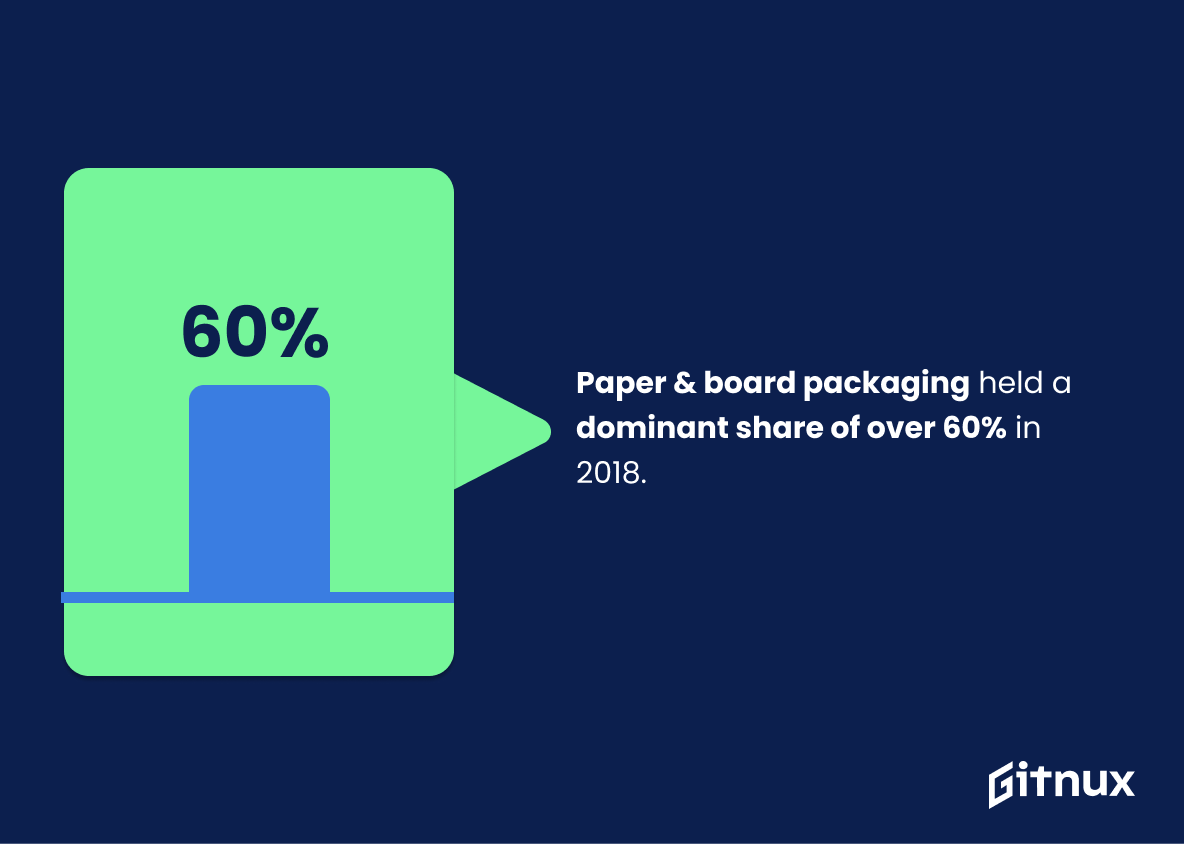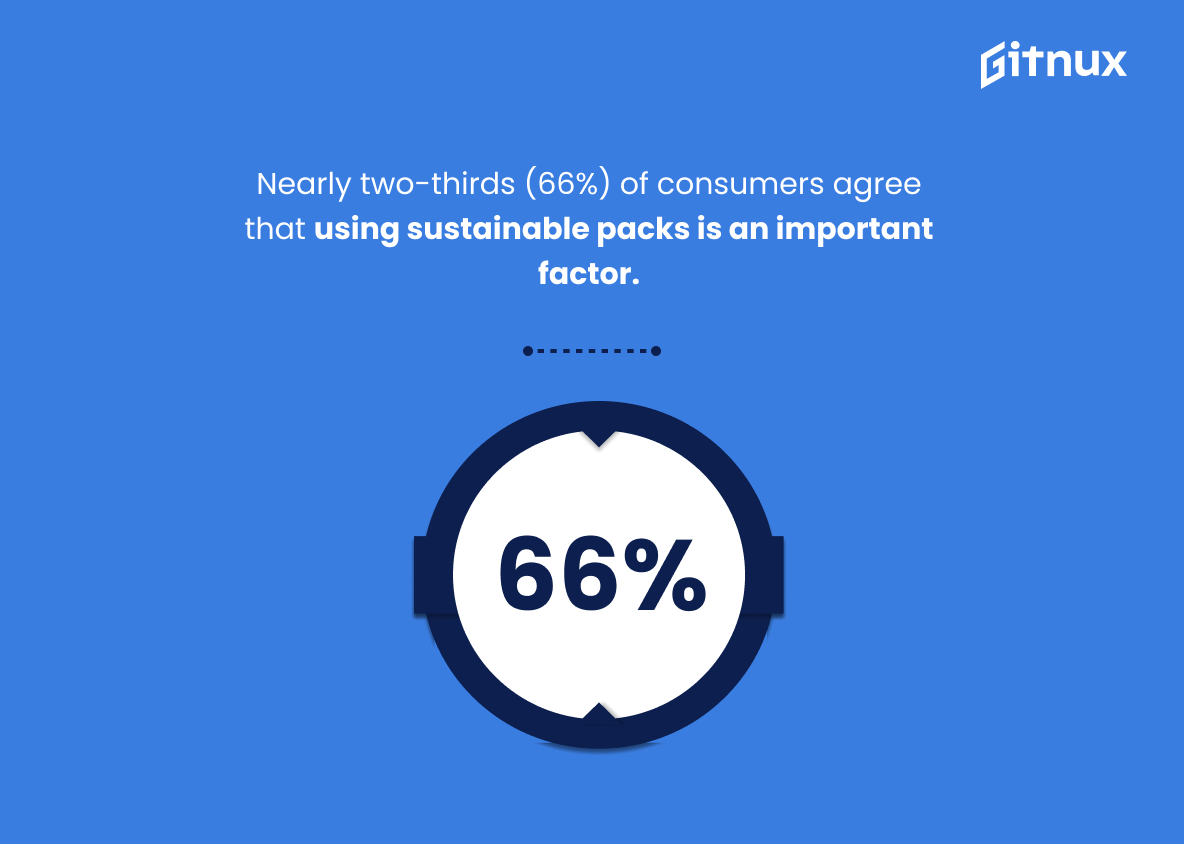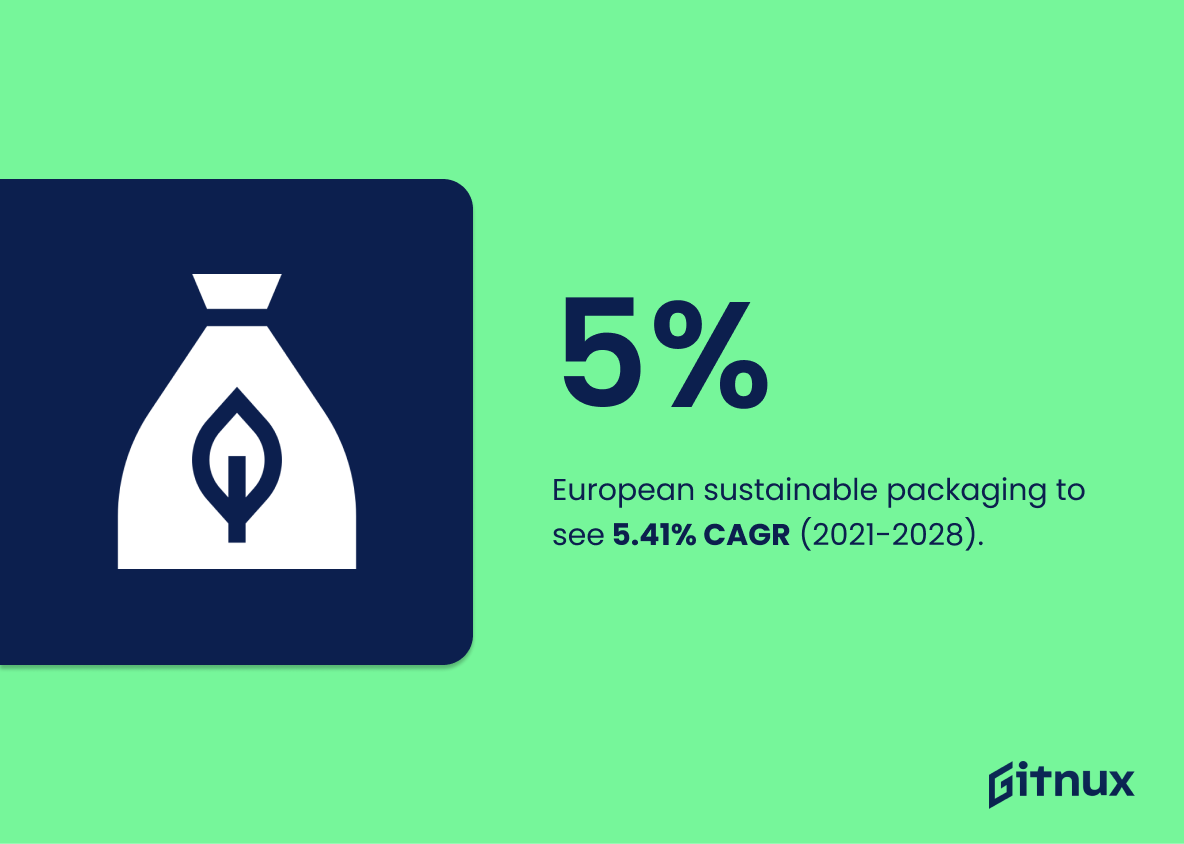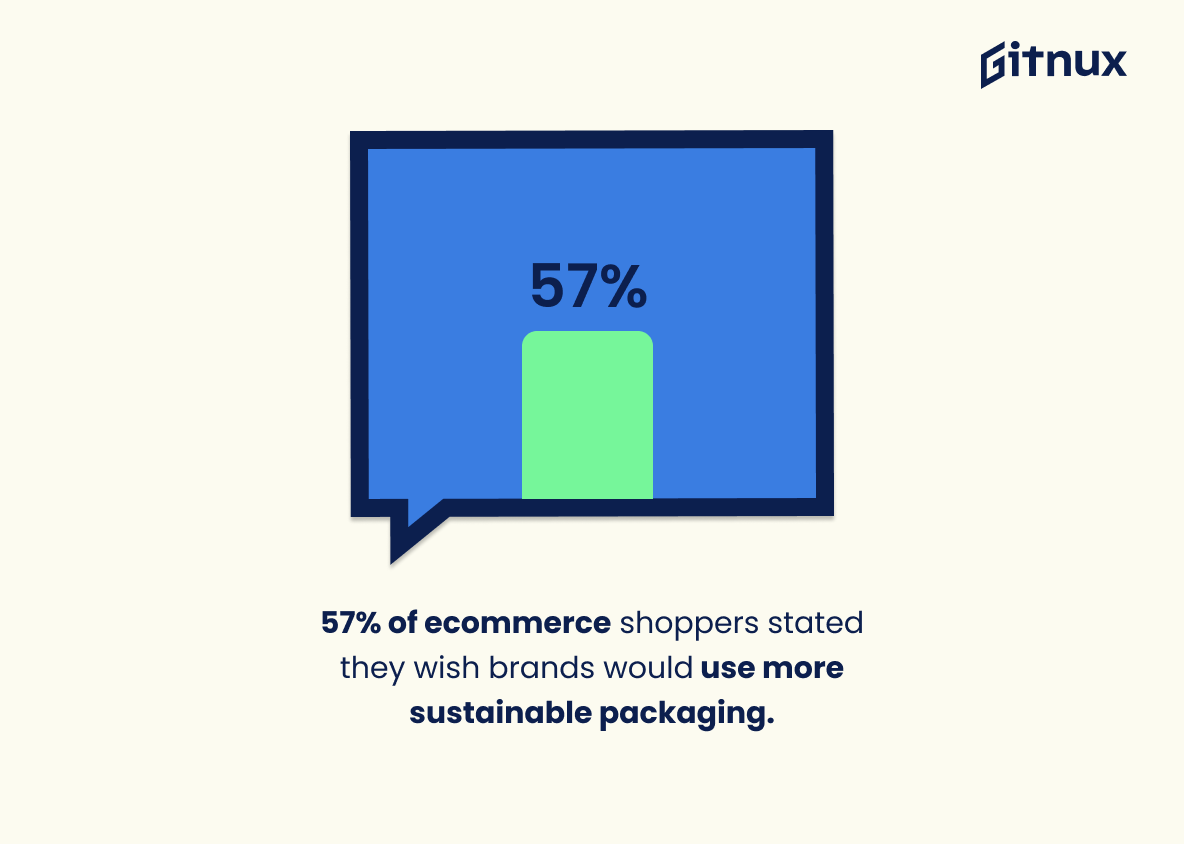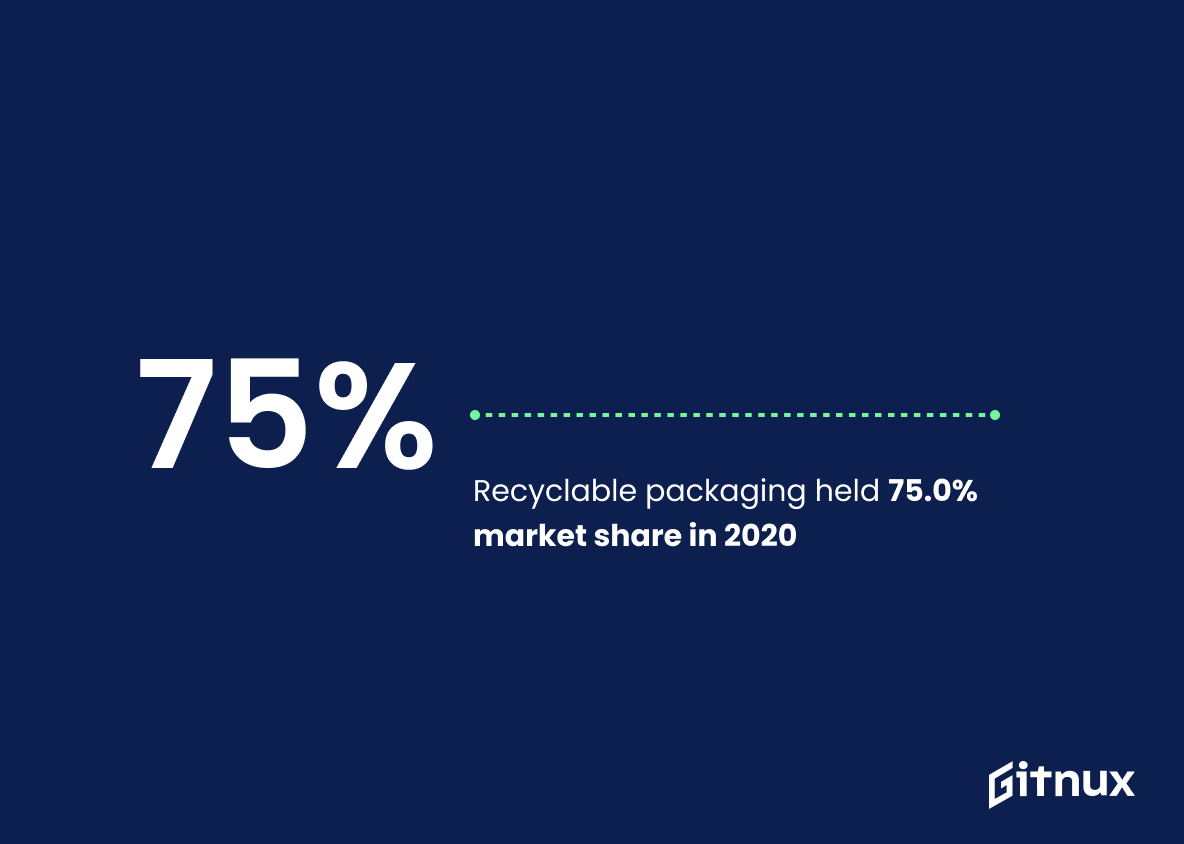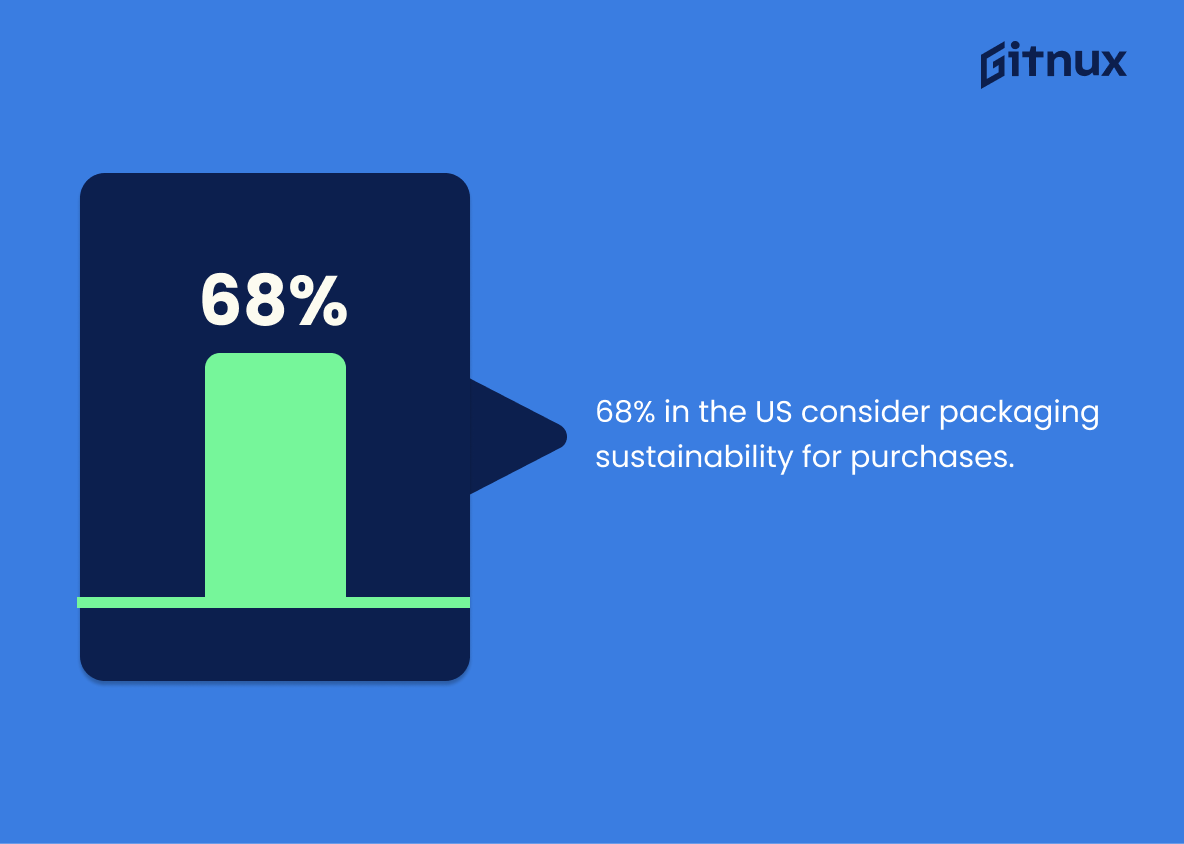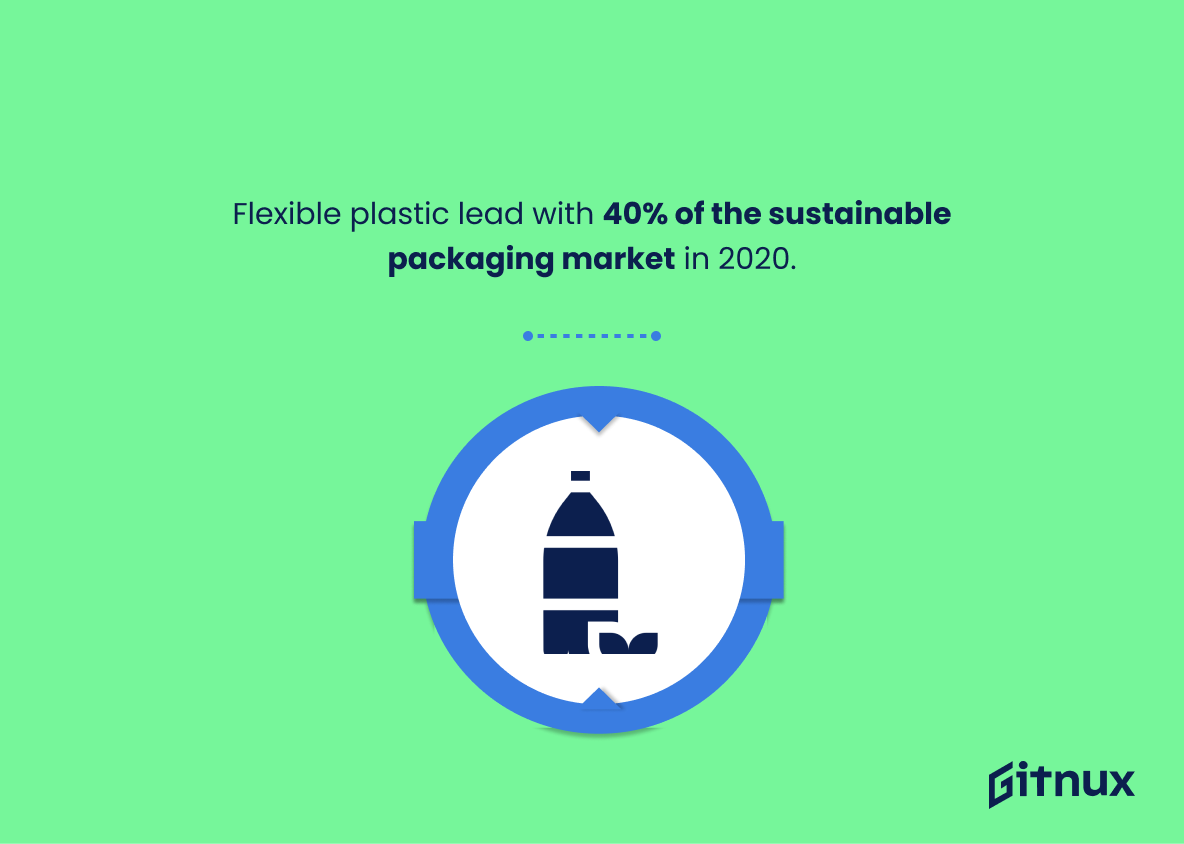Delving into the rapidly evolving world of sustainable packaging, it’s impossible to ignore the impressive strides the sector is making. As eco-friendly solutions steadily become the norm rather than the exception, this packaging paradigm shift is fueled by alarming environmental statistics and increasingly conscientious consumers. In our latest blog post, we’ll delve deep into the fascinating sphere of sustainable packaging industry statistics, offering valuable insights into current trends, future projections, market growth, and much more. By understanding these stats, businesses can not only adapt but also thrive by aligning their operations with the world’s urgent demand for sustainability. So, join us as we unwrap the facts behind the ‘green’ packaging that’s reshaping industries, one eco-conscious decision at a time.
The Latest Sustainable Packaging Industry Statistics Unveiled
The global sustainable packaging market size was valued at USD 228.27 billion in 2019.
Laying the golden egg in our statistical analysis, is the astounding valuation of the global sustainable packaging market at a hefty USD 228.27 billion in 2019. This figure is not just an impressive number, but a robust testament of the significant momentum that the sustainable packaging industry is gaining. It signals a massive demand for eco-friendly packaging solutions, an evidence of how consumers and businesses around the globe are increasingly leaning towards sustainable practices. Furthermore, considering this mammoth 2019 valuation, one can reasonably anticipate a promising and lucrative future growth trajectory for this industry. So, when you delve into the world of sustainable packaging, you’re capitalizing on a multi-billion dollar industry that is showing no signs of slowing down, painting a profound picture of the influential role sustainability plays in the packing sector.
The global sustainable packaging market size is projected to reach USD 380.14 billion by 2026.
Forecasting a valuation as substantial as USD 380.14 billion for the global sustainable packaging market by 2026 heralds exciting opportunities and dawning horizons in the sphere of sustainable packaging. This projection not only conveys the escalating demand for eco-friendly solutions, but it also signifies the industry’s monumental potential for growth, innovation and profitability. In the context of a blog post about Sustainable Packaging Industry Statistics, this fact serves as an invaluable piece of information, offering readers a compelling viewpoint on the industry’s anticipated trajectory and the potential impact on businesses, consumers and the environment alike.
North America accounted for the largest share in the sustainable packaging market in 2019.
Highlighting North America’s dominance in the sustainable packaging market in 2019 underscores a critical pivot point in the industry’s history. This flashpoint shows not just a trend but a leadership position in eco-consciousness which has much wider implications. It indicates a palpable shift in consumer behavior and corporate decision-making, given that North America hadn’t always been at the forefront of such movements. This development, therefore, makes the entire industry sit up and take note, influencing strategic decisions from manufacturing processes to marketing techniques in the sustainable packaging market. Moreover, it offers a benchmark for other continents striving to up their stake in sustainable practices, fostering a global race towards a greener planet.
The Food & beverage segment led the market and accounted for a share of more than 55% in 2019.
Highlighting that the Food & Beverage segment commanded a significant market share of more than 55% in 2019, underlines the principal role this sector plays within the Sustainable Packaging industry narrative. It draws focus to the notable influence of sustainable packaging trends and innovations within this sector. Consequently, it piques the interest of stakeholders, investors, and innovators who might be seeking opportunities to invest or make significant improvements in sustainable packaging within the Food & Beverage industry. Simultaneously, it signals the degree of commitment and responsibility the Food & Beverage industry has towards driving sustainable packaging practices, considering its influential standing in the overall market scenario.
63% of Americans would prefer to buy goods and products in sustainable packaging.
Diving into the heart of the Sustainable Packaging Industry, this compelling statistic illustrates a burgeoning transformation in consumer sentiment. A notable 63% of Americans showing a preference for goods and products in sustainable packaging is a sounding gong for industry players. It not only underscores the existence of a market that is willing to support and adapt to environmentally friendly packaging, but also provides a nudge towards the necessity of adopting sustainable practices. The canvas of the packaging industry is therefore, clearly on the verge of a green revolution. This statistic is a testament to the surging tide of eco-conscious consumers, signaling bright prospects for innovators in sustainable packaging.
48% of the participants stated that they are willing to pay between 1-4% more for packaging that is sustainable.
This powerful number, 48%, casts a spotlight on an increasingly conscious consumer base. It reveals a promising trend in the sustainable packaging industry, underscoring the disposition of nearly half the participants to invest more for eco-friendly choices. This willingness to shoulder a higher cost offers a significant perspective: it supports the value and growth potential of sustainable packaging initiatives. Our future suggests a market increasingly geared towards sustainability, demanding businesses to rethink and adapt their strategies. Understanding this percentage is akin to peeling back the layers of public sentiment, thereby stimulating a revitalized approach in the packaging industry towards more conscious, sustainable solutions.
The Asia Pacific market is projected to reach USD 101.4 billion by 2025.
Painting a vivid picture of the future landscape of sustainable packaging industry, the projected market value for the Asia Pacific region hints at a booming USD 101.4 billion industry by 2025. This colossal figure underscores not only the growing demand for eco-friendly solutions in packaging, but also the promising investment potential within this area. Given the rising consciousness about environmental concerns, this eye-opening statistic portrays Asia Pacific as the fertile ground for sustainable packaging businesses that can meet the growing desires for more sustainable alternatives. Thus, for any reader invested in this field, it essentially acts as a beacon, guiding them towards new business opportunities and strategies most relevant for the coming years.
Packaging segments like food service and secondary packaging will grow at more than 11 percent CAGR between 2020 to 2026.
As we unwrap the future of the sustainable packaging industry, one simply can’t overlook the data indicating that food service and secondary packaging segments are projected to expand at over 11% CAGR from 2020 to 2026. This insight paints a vivid picture of the dynamic changes on the horizon, hinting at the strong demand for sustainable solutions within these sub-sectors. Not only does it emphasize the steady acceptance and adaptation of sustainable practices across industries, but it also articulates the growth opportunities for businesses focusing on green innovation. This trend simultaneously echoes social shifts in consumer behavior, revealing a growing appetite for sustainable goods and services. Therefore, while considering strategies for eco-friendly packaging, understanding this growth forecast becomes instrumental to full-circle sustainability progress.
Paper & board packaging held a dominant share of over 60% in 2018.
In knitting together the narrative of the Sustainable Packaging Industry statistics, we trace the contours of an intriguing dominance – an impressive 60% share held by paper & board packaging in 2018. This position of preeminence commands attention for a couple of key reasons.
Firstly, it shines a light on the sector’s preference for materials that nudge towards sustainability. Paper & board are recyclable, renewable, and have less of a carbon footprint compared to plastic; their leadership in 2018 points us towards an industry increasingly conscious of its environmental impact.
Secondly, it demarcates a starting point. With this benchmark, we can monitor the unfolding tectonic shifts in industry preference, technology advancement, and consumer demand’s role in shaping the landscape of sustainable packaging. It leaves us curious – will paper & board maintain their commanding lead, or will another, perhaps more sustainable brand of packaging, steal the throne?
Nearly two-thirds (66%) of consumers agree that using sustainable packs is an important factor.
Delving into this compelling statistic reveals the strong sentiment consumers harbor towards sustainable packaging, underscoring a drastic consciousness shift happening in society. In the realm of sustainable packaging industry statistics, this figure shines like a lighthouse, guiding businesses that are yet to venture into eco-friendly designs and operations. It’s a clear indicator that aligning business models with sustainability is no longer a mere trend or peculiar value-proposition but an absolute necessity to keep up with consumer demands and market trends. Essentially, this statistic is a beacon in the fog directing companies towards a more prosperous and environmentally friendly course, making them rethink their approach and inciting innovation around sustainability in the packaging industry.
The European sustainable packaging market is predicted to record a CAGR of 5.41% during the projected years 2021-2028.
Highlighting the projected compound annual growth rate (CAGR) of 5.41% for the European sustainable packaging market from 2021 to 2028 provides a striking snapshot of the potential future landscape of this industry. This figure acts as a powerful signal of sustainability trends influencing the packaging industry in Europe. It demonstrates a mounting momentum towards eco-friendly solutions, underscoring broad-scale shifts in consumer demands, business practices, and legislative policies. In other words, it sets the tone for an industry on the brink of transformative changes, where sustainability is no longer an optional extra, but a prerequisite for forward-thinking businesses.
73% of consumers stated that they are willing to pay more for sustainable packaging.
The pulsating heart of this blog post truly beats around the key statistic: ‘73% of consumers are willing to pay more for sustainable packaging.’ It paints a vivid image of a groundswell of eco-conscious consumers, a tide that’s rising and reshaping the packaging industry’s landscape. It’s an indicator that sustainability isn’t just a buzzword, but creates monetary value and indicates consumer preference.
Dressed in such a percentage, it presents much more than mere digits – it’s a mirror showing us the powerful consumer shift toward environmental responsibility. It creates an economic incentive for businesses to innovate their packing strategies. In a world where consumers hold the purse strings, this statistic serves as a guiding star, leading the way towards future trends in the packaging industry. Sustainability is no longer a choice, but an expectation – and one consumers are ready to invest in.
By 2024, personal care packaging is anticipated to reach over USD 25 billion.
Envisioning the future of the packaging industry, one can not possibly ignore the escalating figure that personal care packaging is projected to reach – an impressive mark of over USD 25 billion by 2024. This staggering prediction captivates a monumental role in unpicking the narrative of our blog post on Sustainable Packaging Industry Statistics.
In light of eco-conscious consumerism and rising demand for sustainable packaging solutions, this statistic carries immense weight. It not only illustrates the booming economy of personal care packaging but also hints at the increasing reservoir of opportunities for the implementation of sustainable practices within this sector.
The figure is indicative of the responsibility that industry stakeholders hold, in diverting this colossal market towards sustainable alternatives. Furthermore, it underscores the potential financial gains that could be harnessed by merging economic advantage with environmental stewardship in packaging decisions.
Just as high risers must have robust foundations, this sturdy estimate of USD 25 billion forms a pivotal cornerstone for our comprehensive study in sustainable packaging, helping to raise the edifice of understanding and strategizing sustainable industrial practices. Therefore, this statistic doesn’t just matter, it makes our vault of sustainable packaging industry statistics significantly richer.
57% of ecommerce shoppers stated they wish brands would use more sustainable packaging.
Examining the aforementioned statistic, a clear revelation of the consumers’ prevailing desires can be seen. Under this consumer microscope, more than half – a robust 57% – of ecommerce shoppers expressed their aspiration for brands to increasingly adopt sustainable packaging. This figure is not just a mere number–it’s a powerful insight handcuffed with considerable weight, easily portraying it as a cornerstone statistic for any discourse on the sustainable packaging industry. Essentially, it empowers the narrative, like a compass pointing towards a much-needed transition. It’s this very consumer appetite for eco-friendly practices that has the potential to steer the rudder of the packaging industry towards more sustainable waters.
The recyclable type segment dominated the sustainable packaging market with a share of 75.0% in 2020.
Our spinning blue globe took a big green step in 2020, as the pervasive paradigm of sustainable packaging was championed by the recyclable type segment – truly a behemoth within the arena, claiming dominion over a staggering 75.0% of the market. This isn’t just a number; it’s a testament to the industry’s response to globe-spanning demands for change, a showcase of its commitment to environment-first strategies. It sheds light on the pivotal role recyclable solutions play, affirming that they aren’t just a ripple on the surface of the sustainability sea – they’re a powerful wave steering the sustainable packaging ship towards a cleaner future.
68% of the total population in US agreed that the sustainability of packaging influences their purchasing decision.
Shining a light on the potent influence of this statistic showcases a critical revelation. Around two-thirds of the U.S population, or more broadly speaking, 68%, factor in the sustainability of packaging when making a purchase. This heightened consumer consciousness undoubtedly points to an enriching opportunity for the sustainable packaging industry, providing it with a firm foundation to expand and flourish. This figure also unveils the escalating value consumers invest in sustainability, suggesting its potent role as a decisive driver in their purchasing behavior. Thus, companies operating within the packaging industry stand to gain considerable competitive edge by integrating sustainable practices within their business models.
Flexible plastic lead with 40% of the sustainable packaging market in 2020.
Highlighting the commanding 40% market share of flexible plastic in 2020 furnishes a profound understanding of the existing dynamics in the sustainable packaging arena. It underlines the dominance of flexible plastic, acting like a lighthouse guiding other industry players towards the potential benefits and popularity of this sustainable packaging material. More so, it accentuates the decisive role of flexible plastic as a key player driving sustainable strides in the packaging industry, igniting conversations around its contribution and potential improvements. Not to mention, it sets a robust foundation for future predictions and trends within this evolving sector.
Edible bottles, cups and balloons could help reduce plastic waste by 80%.
Examining this illuminating statistic – ‘Edible bottles, cups, and balloons could help reduce plastic waste by 80%’ suggests a promising and transformative shift in the sustainable packaging sector. It enumerates the incredible potential inherent in innovative bio-based packaging approaches, positioning them as game-changers in reducing the infamous plastic waste that is generating environmental concerns worldwide.
Moreover, this statistic acts as a compass needle pointing towards the tangible results such a shift could produce. With an astounding 80% reduction proposed, a fundamental transformation and downsizing of the environmental footprint left by plastic waste seems not only possible, but potentially achievable. This ideal scenario would bring about a scenario in which industries and consumers alike contribute to, rather than detract from our environment’s health.
Furthermore, this statistic emphasizes the power of creativity and innovation in sustainable practices. The forward-thinking concept of edible containers restructures our understanding of packaging’s life cycle – from a one-time-use item to be discarded, packaging now holds the potential to be consumed, redefining waste as we know it.
In the broader picture of sustainable packing, these numbers offer more than just data. They forge a vision of a world in which industry growth and environmental sustainability aren’t at odds, but rather work together in harmony. As such, this statistic acts as a significant keystone in demonstrating the bright future of the sustainable packaging industry.
52% of people make purchasing decisions partially due to packaging that shows a brand making a positive social and environmental impact.
The charm of a number such as ‘52%’ cannot be underestimated when it paints the picture of conscious consumerism in the context of our blog post on Sustainable Packaging Industry Statistics. It is a clear indicator that more than half of the purchasing public are influenced by the ethical footprint of a product, as revealed by its packaging. This cascades into an impactful revelation for manufacturers, nudging them towards packing solutions that highlight their positive social & environmental contributions. With every second customer making purchases somewhat influenced by such sustainability efforts, this number serves as a resonant validation for the burgeoning rise and potential profitability in the sustainable packaging industry.
85% of Millennials and Gen Z consumers expressed their willingness to switch to brands associated with eco-friendly packaging.
In the realm of Sustainable Packaging Industry Statistics, the fact that 85% of Millennials and Gen Z consumers exhibit readiness to transition to brands dedicated to eco-friendly packaging paints an intriguing picture. It’s akin to planting a solid oak tree in the vast canvas of consumer behavior trends. Unveiling this percentage underlines a shifting tide in purchasing decisions, one that favors the environment and the global drive towards sustainability. Interestingly, this surge is predominantly steered by Millennials and Gen Z – the cohorts commanding significant purchasing power in today’s market. Hence, this number is not merely a statistic but a compelling narrative of evolving consumer loyalty, demanding attention from every brand that aspires to stay relevant in this steadily ‘greening’ market landscape.
Conclusion
In wrapping up, it’s clear to see that the sustainable packaging industry only continues to grow and evolve, playing a pivotal role in our environmental protection efforts. More companies and consumers are awakening to the importance of sustainable practices, and the eco-friendly packaging market is one testament to that. Industry statistics undeniably point towards a greener future, with businesses around the globe incorporating eco-conscious strategies into their operations. As these trends carry forward, one thing is certain – sustainable packaging isn’t just a fleeting trend, but rather a long-term solution paving the way for a more sustainable world. As the figures underline, the real value of sustainable packaging transcends the immediate business benefits – offering a stronger, vital contribution to the global environment.
References
0. – https://www.www.barnesandnoble.com
1. – https://www.www.packagingdigest.com
2. – https://www.www.transparencymarketresearch.com
3. – https://www.www.grandviewresearch.com
4. – https://www.www.gminsights.com
5. – https://www.www.globenewswire.com
6. – https://www.www.weforum.org
7. – https://www.www.nielsen.com
8. – https://www.www.cosmeticdesign.com
9. – https://www.dotcomdist.com
10. – https://www.www.smurfitkappa.com
11. – https://www.www.marketsandmarkets.com
12. – https://www.www.prnewswire.com
13. – https://www.www.fortunebusinessinsights.com
14. – https://www.www.packworld.com
15. – https://www.www.marketresearch.com
